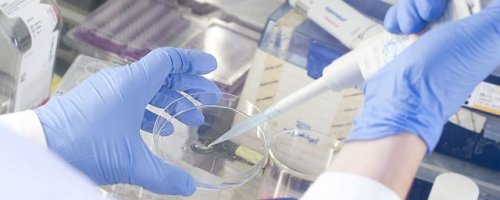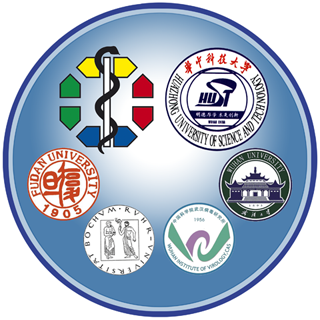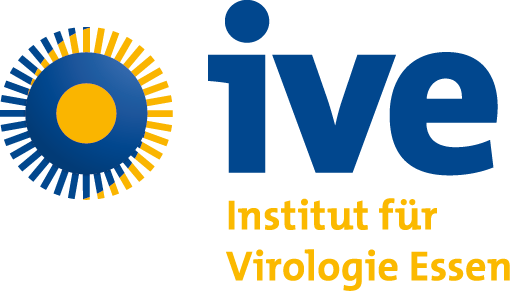Project Part C

Project Part C: Prophylactic and therapeutic
vaccination
目标C:预防和治疗性疫苗研发的基础理论问题
Project C1:
Development and testing of nanoparticle-based vaccines to overcome chronic infections
治疗慢性持续性病毒感染的纳米颗粒疫苗的研制与测试
Prof. Dr. Jan Buer, Prof. Dr. Astrid Westendorf,
Institute for Medical Microbiology, Essen
Prof. Dr. Matthias Epple, Institute of Inorganic Chemistry, Essen
The currently available treatments of many chronic infections do not lead to satisfactory results. In the present project we will translate our experience obtained during prophylactic vaccination to the development of a therapeutic vaccine against chronic retroviral infection. Accordingly, we will focus on three major topics. 1. We will improve and optimize the calcium phosphate nanoparticle composition as vaccination tool. 2. We will test the vaccination efficiency of TLR13 ligand-functionalized calcium phosphate nanoparticles. 3. We will use functionalized calcium phosphate nanoparticles for therapeutic vaccination against chronic retroviral infection.
Project C2:
Regulation of HIV Env specific immune responses by intrastructural help and suppression
通过异源辅助性T细胞的结构内辅助增强 HIV Env 特异性抗体反应的研究
Prof. Dr. Klaus Überla, Dept. of Molecular and Medical Virology,
Ruhr-University Bochum
Gag-specific T-helper cells increase the Env antibody response in mice after booster immunizations with virus-like particles (VLPs) containing Gag and Env by the intrastructural help mechanism. The aim of the current project is to exploit this intrastructural help to modulate the antibody response to HIV Env by heterologous T helper cells. Mice will be immunized against heterologous antigens prior to booster immunizations with VLPs containing the heterologous antigens inside. By using different modes of priming against the heterologous antigens, we aim to modulate the humoral immune response to the HIV Env with a particular focus on inducing mucosal immune responses.
Project C3 (ended):
The effects of both inhibiting HBV replication and inducing HBV-specific T cell responses by anti-ASGPR scFv-targeting siRNA specific for HBx and HBeAg
Prof. Dr. Guanxin Shen, Prof. Dr. Xiongwen Wu,
Institute for Immunology, HUST, Wuhan
Prof. Dr. Mengji Lu, Institute for Virology, Essen
Project C4 (ended):
The role of HIV and HCV envelope glycosylation in anti-viral immune responses
Prof. Dr. Jianguo Wu, State Key Lab. of Virology, College of Life Sciences, Wuhan
Prof. Dr. Xiaolian Zhang, Institute of Immunology, College of Life Sciences, Wuhan
Project C5N:
Using flagellin adjuvant based activation of two independent PRR signaling pathways to improve therapeutic anti-viral vaccines
基于鞭毛素蛋白两条不同模式识别受体信号通路的疫苗佐剂研究及其在治疗性抗病毒疫苗中的应用
Prof. Dr. Huimin Yan, Institute of Virology, Wuhan
鄢慧民教授, 中国科学院武汉病毒研究所
Flagellin is comprised of a middle hypervariable region, a N-terminal conserved domain and a C-terminal conserved domain, where the two conserved domains form a dimer for activating TLR5 as well as inflammasome NLRC4, mediating the adjuvant effects of flagellin. The most attractive advantage of flagellin as adjuvant is its plasticity for generation of antigen-flagellin fusion proteins as vaccine candidates. We will aim to further investigate the relationship of adjuvant activity and the dual pathways of flagellin, and find out unique flagellin adjuvants beneficial for therapeutic HBV vaccine. For this purpose, we will construct a series of flagellin-HBV fusion protein vaccines with different immune activities related to the two independent PRR signaling pathways, and select the best for inducing suitable antibody and T cell responses. The optimized strategy of flagellin-HBV vaccine candidates will be evaluated for the protection efficacy of viral clearance in animal models. Meanwhile, some of the flagellin constructs which can specifically enhance mucosal IgA production can be provided to other PIs for prophylactic HIV vaccine.
Project C6N:
Enforced virus replication as a mechanism for immune activation during virus infection: Relevance for virus persistence and vaccination strategies
增强的病毒复制: 病毒感染过程中一种活化免疫应答的机制
Prof. Dr. Karl Lang, Institute for Immunology, Essen
The innate immune system limits virus replication and also mediates the presentation of viral antigens to adaptive immune cells. In published and unpublished data we found that CD169+ macrophages allow early replication of the vesicular stomatitis virus (VSV) and the lymphocytic choriomeningitis virus (LCMV) replication due to Usp18 expression. In the case of VSV this enforced virus replication was essential for the induction of adaptive antiviral immune responses and, therefore, for the prevention of fatal infection. The overall role of enforced LCMV replication should be analyzed in this proposal.
Project C7N:
Regulation of Pattern Recognition Receptor (PRR) ligands induced immune responses as a novel therapeutic strategy for chronic hepatitis B
调控PRR介导的免疫应答治疗慢性乙型肝炎
Prof. Dr. Xin Zheng, Dr. Jun Wu, Dept. of Infectious Diseases,
Union Hospital of Tongji Medical College, Wuhan
Prof. Dr. Yang Xu, Dept. of Microbiology,
Medical College, HUST, Wuhan
郑昕 教授, 吴珺 博士,华中科技大学同济医学院附属协和医院
徐飏 副教授,华中科技大学同济医学院病原生物学系
Low virological response to IFN and drug resistance caused by HBV polymerase mutations are severe problems in chronic HBV treatment. The expression of the HBV S gene, C gene, or polymerase gene may affect Toll-like receptor (TLR) signaling pathways. The mutations in these genes may interfere with innate immune responses which are further involved in the adaptive immune response and pathogenesis. TLR3 agonist treated Kuppfer cells (KCs) and liver sinusoidal endothelial cells (LSECs) can inhibit HBV replication in HBV-Met cells. TLR3 and NOD1/2-costimulated hepatocytes and liver sinusoidal endothelial cells (LSEC) can induce a more potent antiviral activity compared with only TLR3 stimulation in vitro. Our goal is to find out if HBV proteins (wild type or mutated proteins) alter TLR and /or NOD signalling pathways and if regulation of the TLR3 and/or NOD ligands induced immune responses which can achieve viral clearance in hydrodynamic mouse and woodchuck models and in HBV patients infected with wild type or mutant viruses.


